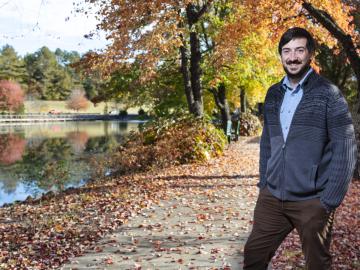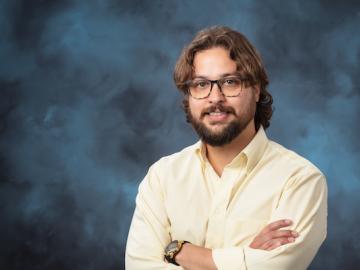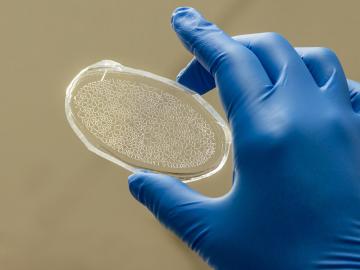
Filter News
Area of Research
- (-) Biology and Environment (21)
- (-) National Security (13)
- (-) Neutron Science (9)
- Computational Biology (1)
- Electricity and Smart Grid (1)
- Energy Science (31)
- Fusion and Fission (18)
- Fusion Energy (4)
- Isotopes (17)
- Materials (25)
- Materials for Computing (1)
- Nuclear Science and Technology (17)
- Quantum information Science (2)
- Supercomputing (17)
News Topics
- (-) Clean Water (10)
- (-) Coronavirus (10)
- (-) Cybersecurity (8)
- (-) Grid (3)
- (-) Microscopy (8)
- (-) Nuclear Energy (3)
- (-) Space Exploration (1)
- 3-D Printing/Advanced Manufacturing (5)
- Artificial Intelligence (14)
- Big Data (11)
- Bioenergy (30)
- Biology (47)
- Biomedical (17)
- Biotechnology (7)
- Buildings (1)
- Chemical Sciences (6)
- Composites (1)
- Computer Science (24)
- Energy Storage (4)
- Environment (62)
- Exascale Computing (4)
- Fossil Energy (1)
- Frontier (3)
- High-Performance Computing (16)
- Hydropower (6)
- Machine Learning (14)
- Materials (7)
- Materials Science (10)
- Mathematics (3)
- Mercury (6)
- Nanotechnology (5)
- National Security (24)
- Neutron Science (54)
- Partnerships (2)
- Physics (2)
- Polymers (2)
- Quantum Computing (1)
- Quantum Science (2)
- Security (6)
- Simulation (9)
- Summit (8)
- Transportation (1)
Media Contacts

Nature-based solutions are an effective tool to combat climate change triggered by rising carbon emissions, whether it’s by clearing the skies with bio-based aviation fuels or boosting natural carbon sinks.

How did we get from stardust to where we are today? That’s the question NASA scientist Andrew Needham has pondered his entire career.

Stephen Dahunsi’s desire to see more countries safely deploy nuclear energy is personal. Growing up in Nigeria, he routinely witnessed prolonged electricity blackouts as a result of unreliable energy supplies. It’s a problem he hopes future generations won’t have to experience.

John “Jack” Cahill is out to illuminate previously unseen processes with new technology, advancing our understanding of how chemicals interact to influence complex systems whether it’s in the human body or in the world beneath our feet.

Matthew Craig grew up eagerly exploring the forest patches and knee-high waterfalls just beyond his backyard in central Illinois’ corn belt. Today, that natural curiosity and the expertise he’s cultivated in biogeochemistry and ecology are focused on how carbon cycles in and out of soils, a process that can have tremendous impact on the Earth’s climate.

In human security research, Thomaz Carvalhaes says, there are typically two perspectives: technocentric and human centric. Rather than pick just one for his work, Carvalhaes uses data from both perspectives to understand how technology impacts the lives of people.

A new paper published in Nature Communications adds further evidence to the bradykinin storm theory of COVID-19’s viral pathogenesis — a theory that was posited two years ago by a team of researchers at the Department of Energy’s Oak Ridge National Laboratory.

Scientists at ORNL have created a miniaturized environment to study the ecosystem around poplar tree roots for insights into plant health and soil carbon sequestration.

When the COVID-19 pandemic stunned the world in 2020, researchers at ORNL wondered how they could extend their support and help

Chemical and environmental engineer Samarthya Bhagia is focused on achieving carbon neutrality and a circular economy by designing new plant-based materials for a range of applications from energy storage devices and sensors to environmentally friendly bioplastics.


